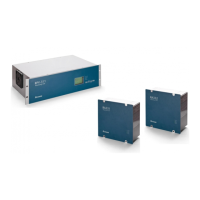Chapter 2 – Safety Information
4 INSTALLATION, COMMISSIONING AND SERVICING
4.1 LIFTING HAZARDS
Many injuries are caused by:
Lifting heavy objects
Lifting things incorrectly
Pushing or pulling heavy objects
Using the same muscles repetitively
Plan carefully, identify any possible hazards and determine how best to move the product. Look at other
ways of moving the load to avoid manual handling. Use the correct lifting techniques and Personal Protective
Equipment (PPE) to reduce the risk of injury.
4.2 ELECTRICAL HAZARDS
All personnel involved in installing, commissioning, or servicing this equipment must be
familiar with the correct working procedures.
Consult the equipment documentation before installing, commissioning, or servicing the
equipment.
Always use the equipment as specified. Failure to do so will jeopardise the protection
provided by the equipment.
Removal of equipment panels or covers may expose hazardous live parts.
Do not touch until the electrical power is removed. Take care when there is
unlocked access to the rear of the equipment.
Isolate the equipment before working on the terminal strips.
Use a suitable protective barrier for areas with restricted space, where there
is a risk of electric shock due to exposed terminals.
Disconnect power before disassembling. Disassembly of the equipment may expose sensitive
electronic circuitry. Take suitable precautions against electrostatic voltage discharge (ESD) to
avoid damage to the equipment.
NEVER look into optical fibres or optical output connections. Always use optical power meters
to determine operation or signal level.

